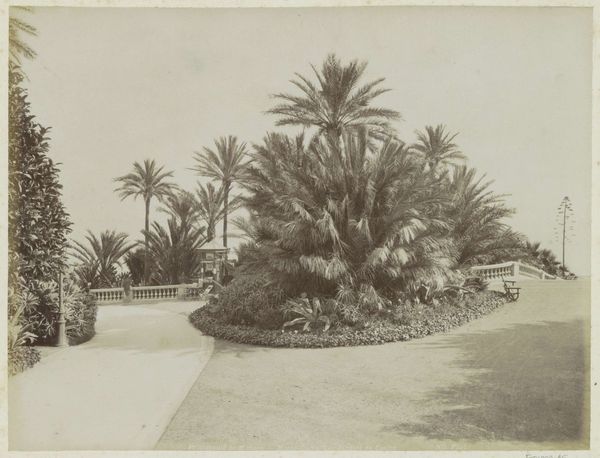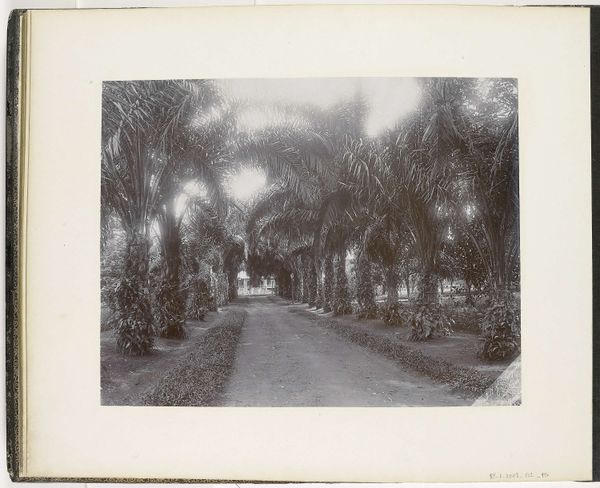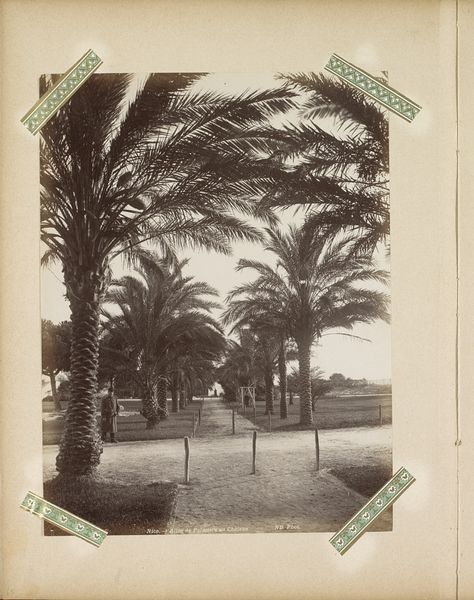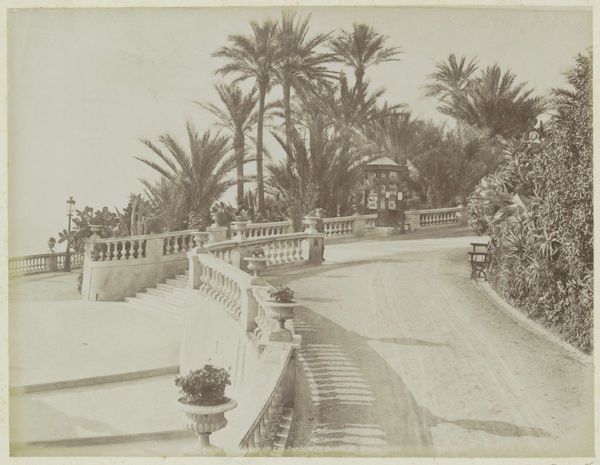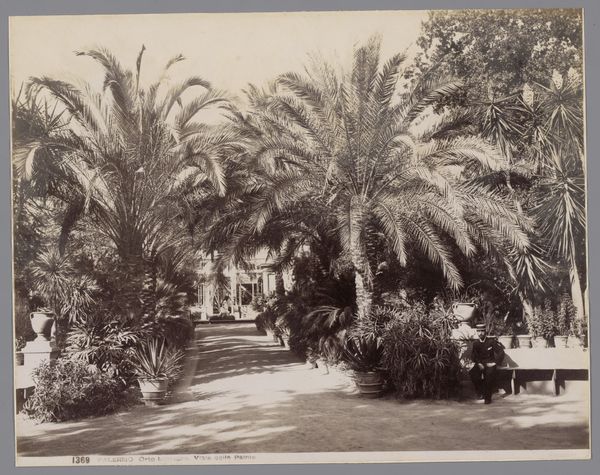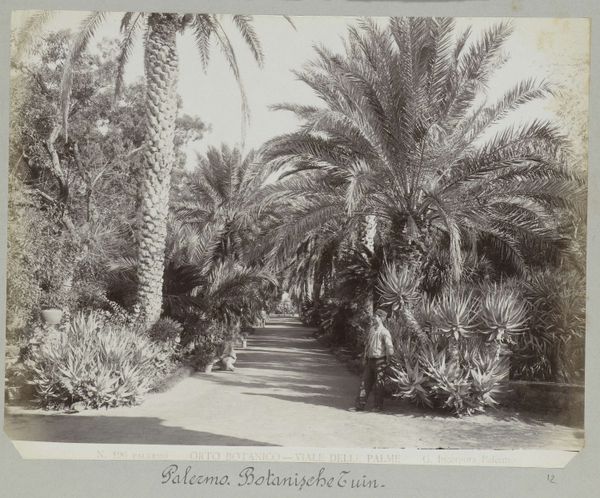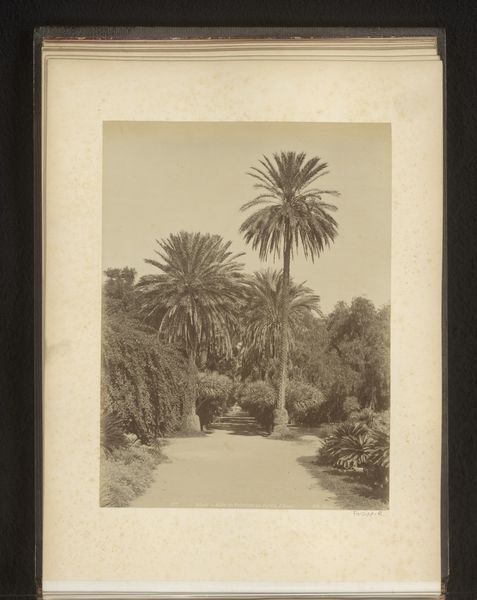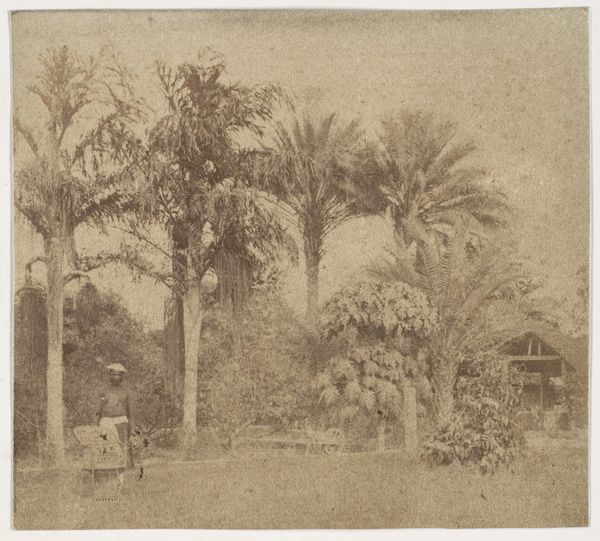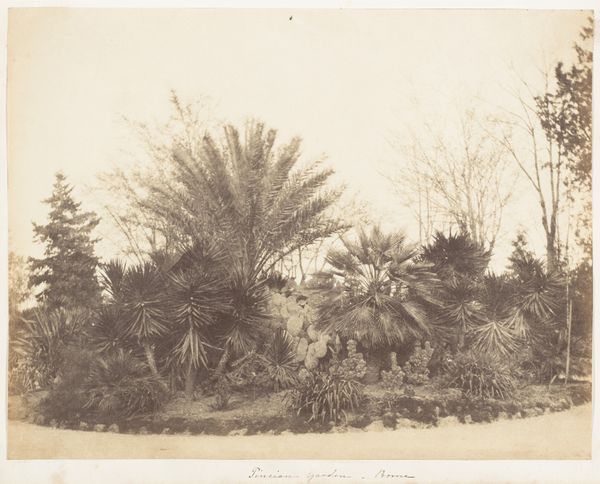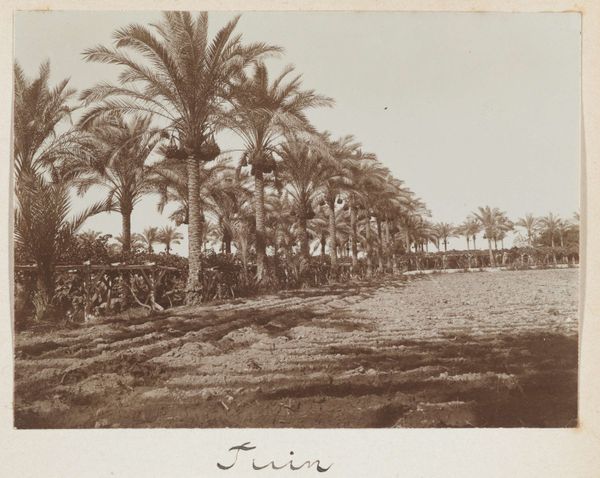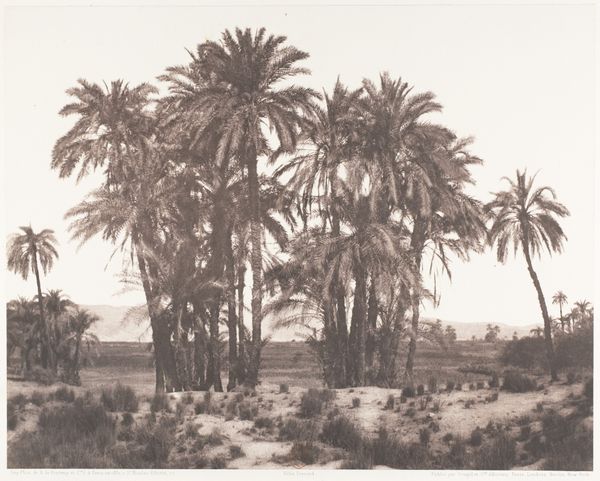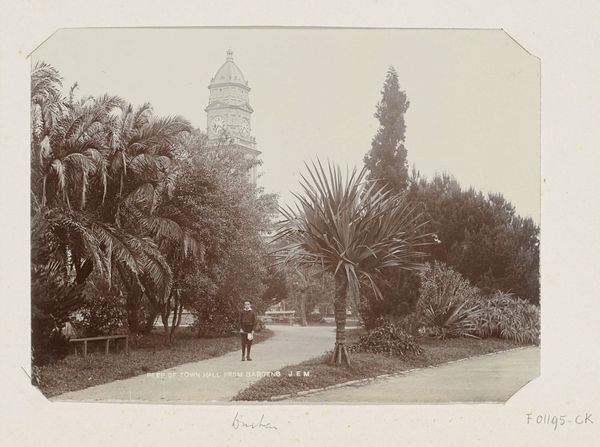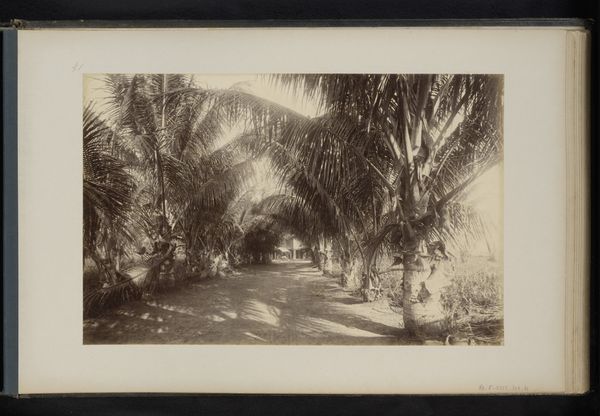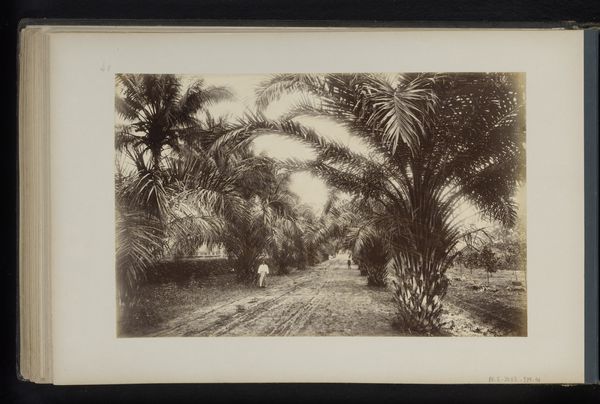
Graf, versierd met amforen, aan een pad in een palmentuin in Alexandrië 1898
photography, albumen-print
landscape
photography
orientalism
albumen-print
Dimensions: height 77 mm, width 109 mm
Copyright: Rijks Museum: Open Domain
Curator: Here we have an albumen print photograph from 1898 by Johannes Lodewijk Heldring. It is titled “Grave Decorated with Amphorae on a Path in a Palm Garden in Alexandria.” Editor: My initial reaction is that there’s an odd tranquility. It’s serene, yet the subject, a decorated grave, hints at mortality. The tonal range of the albumen print softens the scene, but the pyramid structure ornamented with amphorae feels both imposing and melancholic. Curator: Indeed. This photograph comes to us from a time when "Orientalism" was in full swing, influencing the Western gaze on Egypt. Heldring, a Dutch photographer, captures what he likely considered an exotic locale. The grave becomes a spectacle, almost a garden ornament. Editor: Exactly! And that's precisely where the tension lies for me. The act of aestheticizing death in a culture other than his own – we have to consider the power dynamics. Who is this image *for*? Who profits from the circulation of these visions of foreign lands? The palm garden almost becomes a stage, flattening the very real history and cultural context surrounding burial practices. Curator: It is fascinating to consider how photographs like these shaped public perceptions. While on the one hand providing a window into different cultural practices, on the other hand, exoticizing it and promoting the cultural and political agendas of the time. Editor: I agree, and I also wonder how it might have impacted Egyptians' agency, or their lack thereof, to define their cultural narratives against these colonizing representations. The photograph may capture a specific moment, but the effects of Orientalism resonate even now in how the Middle East is often understood. Curator: It serves as a potent reminder that these serene-seeming images are often embedded with socio-political undercurrents. Editor: Precisely, engaging with pieces like this photo gives us insight on not only the landscape and art from the late 1890's, but opens opportunities for discussion regarding important social topics surrounding colonialism and cultural appropriation.
Comments
No comments
Be the first to comment and join the conversation on the ultimate creative platform.
